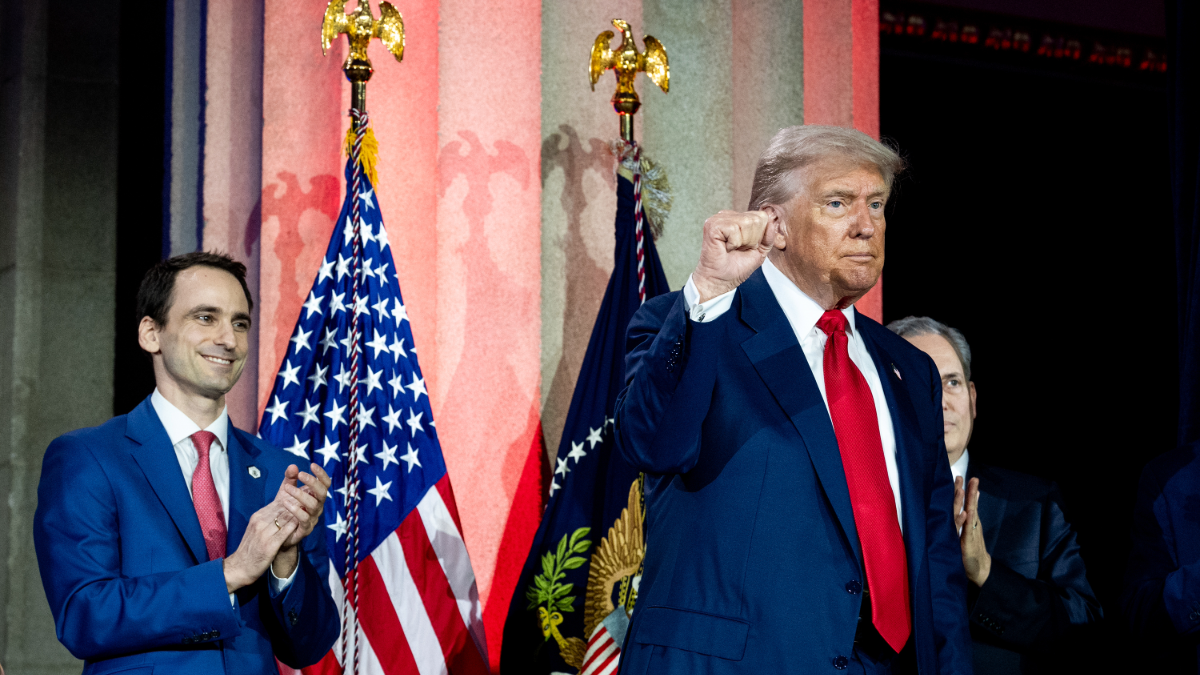The False Neutrality of Trump’s ‘Woke-Free’ AI Plan
Danielle A. Davis / Aug 5, 2025Danielle A. Davis, Esq., is the director of technology policy at the Joint Center for Political and Economic Studies.

President Donald Trump signs Executive Orders at the White House AI Summit at Andrew W. Mellon Auditorium in Washington, D.C., Wednesday, July 23, 2025. (Official White House photo by Joyce N. Boghosian)
When the White House released its long-awaited AI Action Plan in July, it was presented as a blueprint for innovation, competition, and leadership in the age of artificial intelligence. It was also accompanied by a declaration from President Donald Trump that this plan, and the suite of executive orders surrounding it, would ensure the federal government avoids “woke AI.” The phrase, “woke,” casually deployed at rallies and now formalized in federal policy, has profound implications for how the United States approaches the design and deployment of a technology that will shape every aspect of social and economic life.
Multiple pieces on Tech Policy Press have already unpacked aspects of this moment: the real harms of framing AI as “anti-woke”, how the administration’s “innovation” push is in reality a broad deregulation effort, and how the very attempt to ban “woke AI” exposes the deeply ideological nature of these policies. Building on these conversations, I want to focus on a dimension that often gets overlooked: how this shift in federal AI priorities lands on Black communities, who have been and will continue to be the first to feel the weight of these choices.
The idea of a “woke-free” AI plan is being framed by the Trump administration as a commitment to objectivity and ideological neutrality. In practice, it is a rejection of diversity, equity, and inclusion frameworks, a dismissal of structural bias as a problem worth correcting, and a narrowing of AI governance to technical and competitive concerns alone. In the President’s own words, “woke AI” is a distortion of truth, a set of systems that bend facts in order to promote ideological agendas around race, gender, or identity. The executive order on “Preventing Woke AI in the Federal Government” directs agencies to procure only models that conform to “truth-seeking” and “ideological neutrality” principles. Likewise, the AI Action Plan orders the National Institute of Standards and Technology (NIST) to remove any mention of misinformation, climate, and DEI from its widely used AI Risk Management Framework. Under this vision, the tools designed to address bias are themselves redefined as a form of bias.
This shift in orientation is not incidental. It is a reflection of a broader political project: to recast fairness and accountability in technology as partisan distractions rather than as pillars of sound governance. The effect of this framing is to transform AI into a value-neutral technology that can simply be made “accurate” through better data, while refusing to acknowledge that the data itself comes from a world full of inequities. There is no such thing as neutrality when the patterns being modeled are shaped by historical inequities; without deliberate design, those inequities will be reproduced rather than corrected and ultimately codified into the future.
The risks of this approach become clearest when viewed through the lens of Black communities, who have long been the canary in the coal mine for the unintended consequences of emerging technologies—meaning, they are often the first to experience and reveal the harmful effects of these innovations, long before those harms spread more widely. Algorithmic systems already influence hiring, policing, credit scoring, and even access to healthcare. Studies over the past decade have shown that facial recognition tools misidentify darker-skinned people at higher rates, that predictive policing systems send more patrols to communities that have been historically overpoliced, and that automated lending and tenant-screening systems replicate decades of redlining and discriminatory practice. These are not abstract concerns. They are lived realities, and the choice to remove fairness and civil rights protections from the nation’s AI strategy is a choice to look away from those realities.
It is with these consequences in mind that the Joint Center submitted comments on the national AI strategy earlier this year, recognizing that technology policy is not just a matter of fostering innovation. It is a matter of who participates in that innovation, who benefits from it, and who is harmed when systems are built on faulty assumptions. Our comments called for investments in infrastructure so that Black communities are not shut out of the AI economy. They urged the creation of robust pathways for reskilling and transitioning workers whose jobs will be disrupted, with an explicit focus on those sectors—such as manufacturing, transportation, and retail—where Black workers are overrepresented. And they emphasized accountability through workforce impact assessments, supported Black entrepreneurship via innovation hubs and targeted federal procurement strategies, and called for STEM education and business investment tailored to historically under-resourced communities.
The plan released by the White House does include some of these elements, particularly with respect to infrastructure and workforce development. It prioritizes the construction of data centers, the expansion of high-performance computing resources, and the growth of domestic semiconductor manufacturing. It calls for integrating AI skills into federal workforce programs, expanding research and innovation hubs, and providing federal investments and incentives to support training and reskilling. I do not want to minimize the fact that these are important steps. But they are steps toward capacity, not toward fairness nor toward bringing in those who have historically been left out of these industries. And the conspicuous absence of equity, transparency, and accountability frameworks means that capacity is being built on a foundation that will replicate much of today’s inequality.
An algorithm instructed to ignore race and gender is not unbiased; it silently reproduces existing patterns of discrimination while labeling those patterns as “truth.” Far from depoliticizing AI, this vision hardwires a very specific politics into its core—one that privileges speed over scrutiny, elevates competition above accountability, and cements yesterday’s inequities into the systems of tomorrow.
For Black communities, this approach has direct consequences. Jobs that are already vulnerable will be displaced without serious plans for transition or investment in pathways into the industries of the future. Entrepreneurs who might otherwise harness AI as a tool for innovation will be locked out if access to capital and computing infrastructure remains concentrated in the hands of a few dominant firms. Voter suppression campaigns that have already weaponized misinformation and deepfakes will only grow more sophisticated in the absence of a coordinated federal response. Rather than dismissing these threats as “woke AI,” the federal government must confront the reality that AI-driven misinformation poses a direct challenge to democratic participation. And the systems that allocate opportunity—whether in education, housing, or healthcare—will make those decisions using models that have never been designed to correct for inequities, quietly reproducing and codifying them into the future.
The release of this plan could have been a moment for the US to show leadership not just in building AI systems but in ensuring that those systems serve the full breadth of American society. Instead, the administration has doubled down on the idea that fairness is ideology and that objectivity can be achieved by stripping out the very mechanisms designed to detect and correct harm. This is not just a lost opportunity; it is a deliberate course that prioritizes an AI future without guardrails.
Technology has always reflected the values of the societies that build it. Artificial intelligence is no different. A “woke-free” AI plan is not neutral; it is a blueprint for perpetuating the very inequities that this country has long struggled to overcome. If we build without intention, we won’t just automate the past, we will hard-code its inequities into the future and mistake that for progress.
Authors
